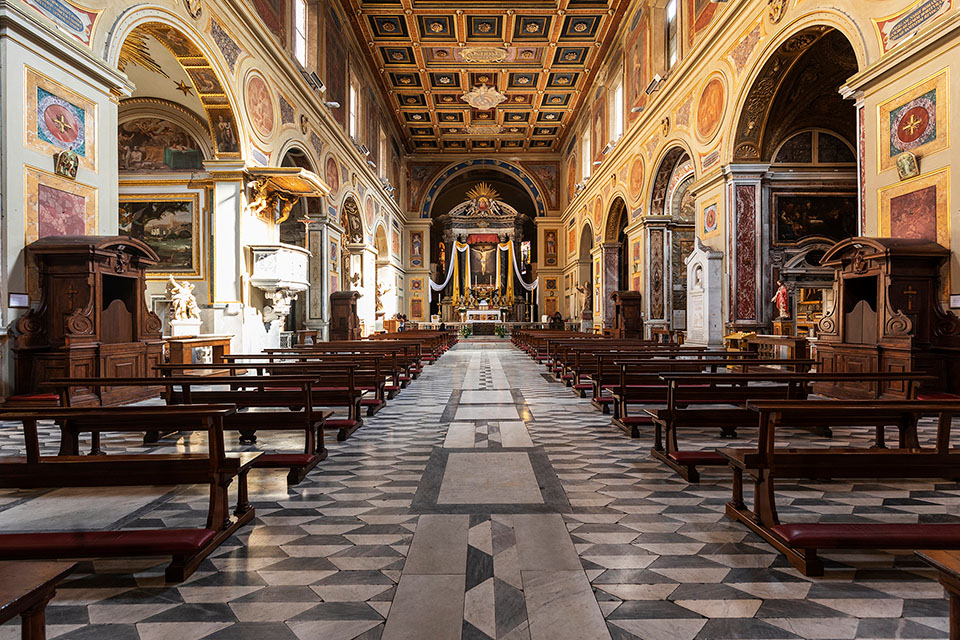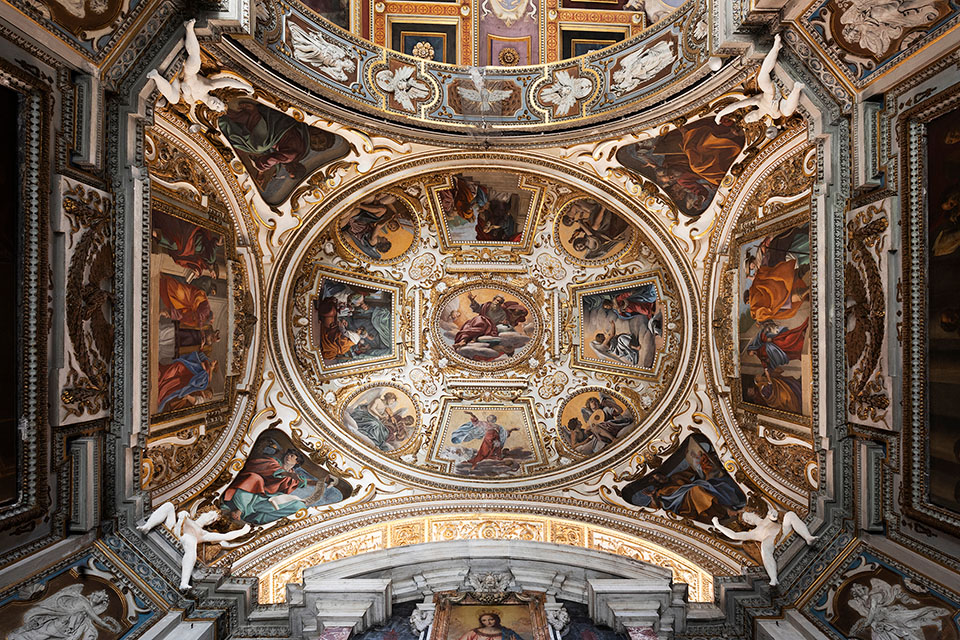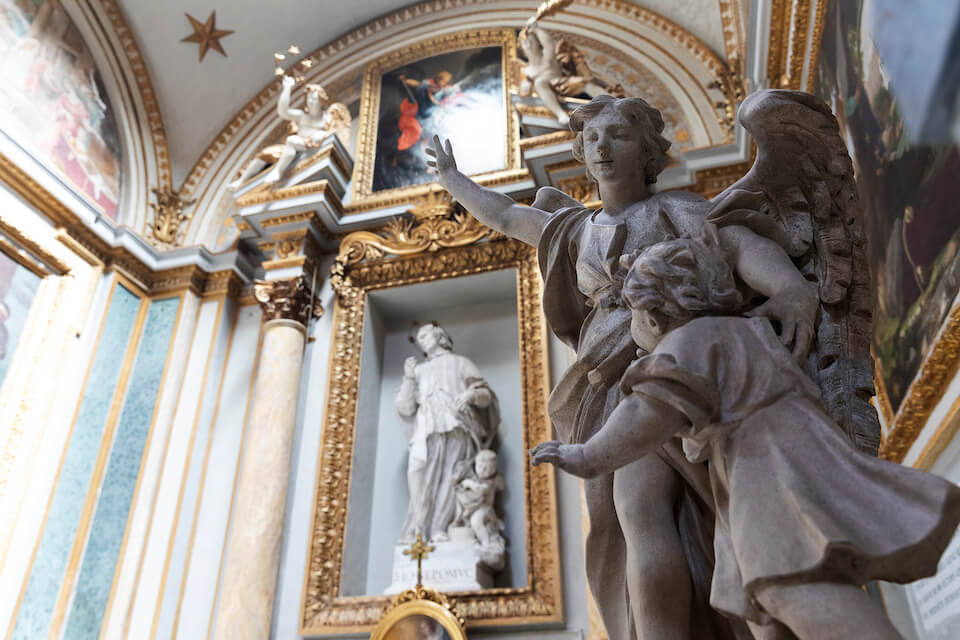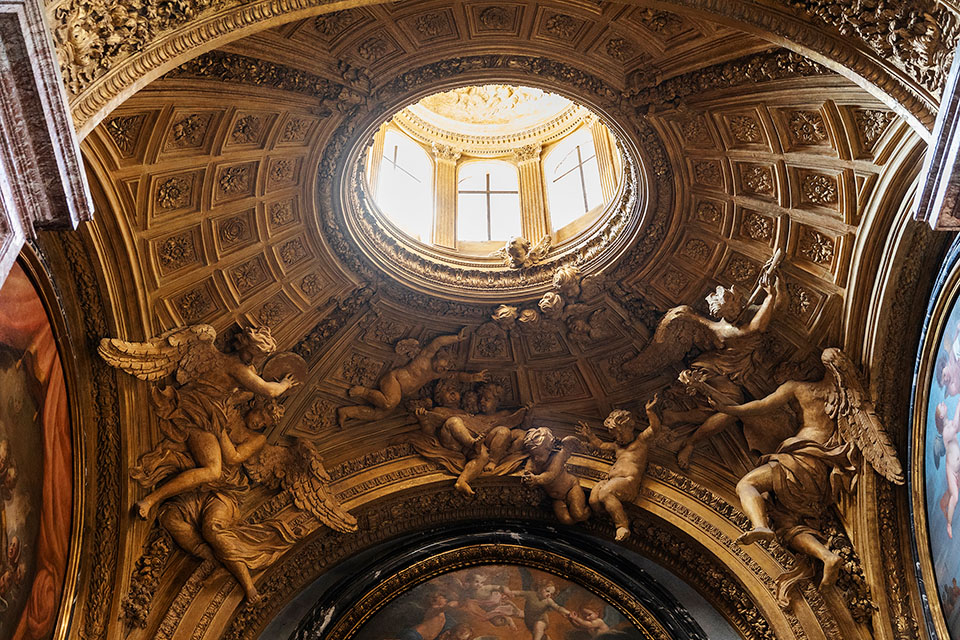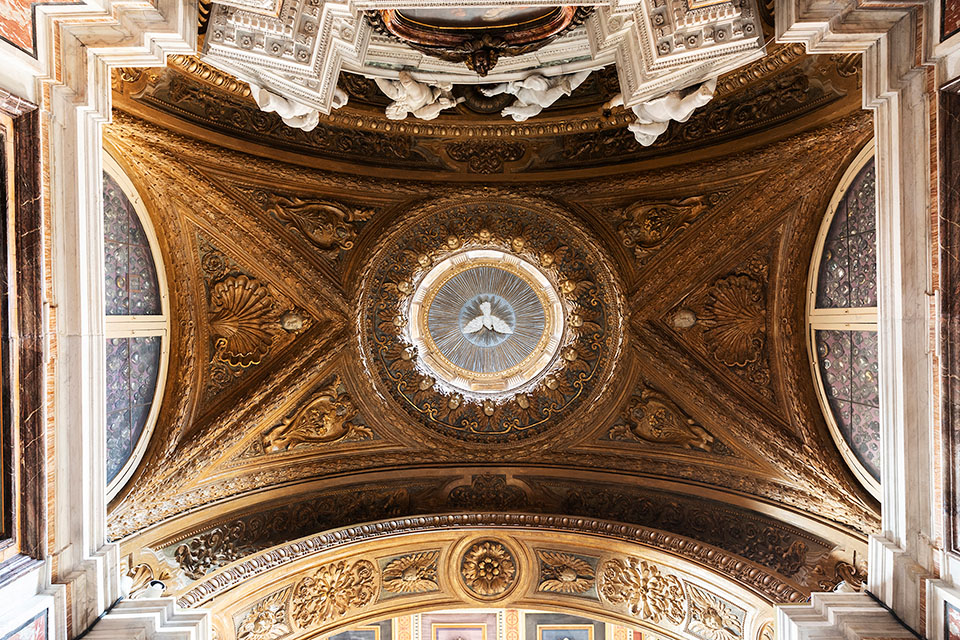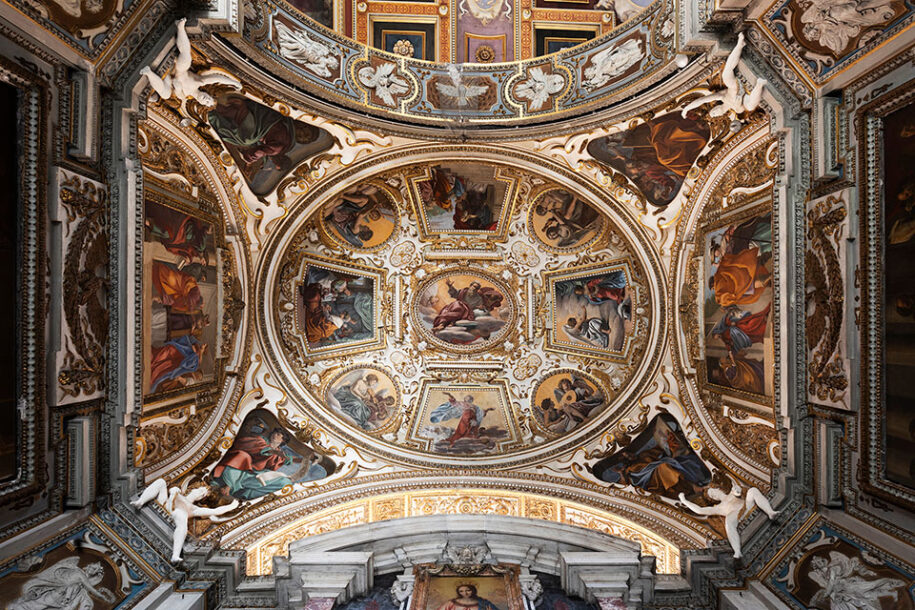May 26th 2022 | 7:15 PM - Rome
On May 26, 2022, in conjunction with the anniversary of the consecration of the Basilica of San Lorenzo in Lucina, the project “From Tourist to Pilgrim” was launched. Following the Pantheon in Rome, the Basilica of San Lorenzo is now involved. The project involves creating a reception area for visitors and developing a new visual identity project with the production of an unprecedented audiotour and a dedicated soundtrack to narrate its artistic heritage.
The idea of narrating and promoting the Basilica of San Lorenzo in Lucina was born as part of the new management of hospitality activities, curated for the parish priest, Monsignor Daniele Micheletti, by D’Uva, a company that has been operating since 1959 in the cultural heritage interpretation, service management, and museum enhancement sector. Through collaboration with partners, institutions, professionals, and creatives, the company has developed a renewed way of experiencing a visit through music and new forms of narration.
The audiotour will be voiced by the great actress Monica Guerritore, who will play the matron Lucina, from whom the Basilica of San Lorenzo is said to have taken its name. The audiotour is accompanied by an original soundtrack, composed specifically by Enrico Gabrielli with 19’40”, a musical group with a transversal, educational, and non-hierarchical approach to classical, electronic, and contemporary music, which is signing the soundtrack for a museum audiotour for the first time.
The words of Monsignor Micheletti underscore the uniqueness and importance of a visit to the Basilica: “Millions of visitors arrive in Rome every year: some do not imagine that it is steeped in Christian faith, some are not Christian, and many do not even have any religious faith. They are tourists with a thousand faces, often distracted, almost carried along by the flow of people and things. They enter to visit a monument of ancient Rome, which belongs to the past and rarely maintains meaning in the present. Instead, the Basilica of San Lorenzo in Lucina still has a life of its own, it speaks to the present, and it has a future. It is still a place of contemplation and research, of question and answer, a sacred space, a Christian Basilica. Thus, a simple visit to one of the many historical places can open up to the surprise of a meaningful encounter that changes one’s life. And a simple visitor, a distracted tourist, can suddenly discover themselves as a pilgrim.”
And Monica Guerritore explains what convinced her to lend her voice to this project: “First of all, we are talking about a beautiful and sacred place, and we theater actors are more or less predisposed to sacred spaces. And to think of my voice telling people who don’t know—just as I didn’t know—about the beauties that greet you and the history that exists and can be breathed inside and under this Basilica was very interesting. I was also amused by the idea of playing the protagonist, the Roman matron Lucina, who is, in the end, the deus ex machina of everything.”
It is said that the wealthy Roman matron founded an ecclesia domestica in her home—a place for worship located in a private house rather than a public basilica. Lucina was very devout and was in the habit of visiting imprisoned Christians. In addition, she used her own assets to bury martyrs and, among them, she also took care of St. Sebastian. In her home in 308 A.D., she gave asylum to Pope Marcellus to save him from the persecutions ordered by Maxentius. Lucina’s house thus became the first core of the Church, which was consecrated a Basilica by Pope Sixtus III in 440 A.D. and dedicated to St. Lawrence, a martyr who died in 258 A.D. during the persecution of the Emperor Valerian.
“We live in an era of multiple and refined stimuli, and it is increasingly difficult to reach the emotions of the tourist, which are already partially satisfied by the visit. Therefore, audio content and original soundtracks aim to enrich the perception of the works without covering the original message that the artist entrusted to their creation. The first successful soundtrack experiences created on the island of San Giorgio in Venice for the audio guides of the Vatican Chapels and the Borges Labyrinth confirmed that beauty adds to beauty, making travel moments unforgettable experiences,” comments Ilaria D’Uva, head of the D’UVA company, which manages the visits to the Basilica of San Lorenzo in Lucina.
The new audiotour is produced by D’Uva. The guided tour texts are by Ilaria D’Uva and Francesca Ummarino, thanks to the studies and research of Federica Cellini and Francesca Paolitto. The music is produced by D’Uva with Adesiva Discografica. The original pieces will be distributed through various channels and in contexts related to the Basilica and will serve as an opportunity to promote and spread knowledge of this place.
On May 26, the day of the consecration of San Lorenzo in Lucina, Yoko Morimyo on violin and Damiano Afrifa on piano, members of the Esecutori di Metallo su Carta, will perform a selection of the original music composed exclusively for the audiotour inside the Basilica.
MONICA GUERRITORE
She debuted in 1974 at the age of sixteen in Il giardino dei ciliegi directed by Giorgio Strehler. In 1981, she became romantically and artistically linked to Gabriele Lavia, who directed her in the roles of Jocasta, Lady Macbeth, Ophelia, Miss Julie, and Marianne in Scenes from a Marriage by Ingmar Bergman. The couple separated in 2001. Guerritore met Giancarlo Sepe and was with him in theater/dance shows such as Madame Bovary, Carmen, and La Signora delle Camelie. In cinema, she achieved great success with Gabriele Lavia’s La lupa in the role that once belonged to the great Anna Magnani, Un giorno perfetto by Ferzan Ozpetek, La bella gente by Ivano De Matteo, La peggior settimana della mia vita by Alessandro Genovesi, and Parfums D’Alger by Rachid Benhadj. On TV, she was in the cast of Manon Lescaut, Sant’agostino, Sabato Domenica e Lunedì, and the 12-episode thriller Non Uccidere. But it is in the theater that Monica Guerritore constantly finds her way, also as an interpreter-director and playwright of hugely successful shows like Giovanna d’Arco, Dall’Inferno all’Infinito, and Mi chiedete di parlare, a text about Oriana Fallaci written and performed by her. She is Judy Garland in the musical End of the Rainbow by Peter Quilter and creates a partnership with Giovanni Nuti, bringing to the stage the songs with lyrics by the great Alda Merini in the concert Mentre rubavo la vita. In 2015, she was the director and interpreter of Qualcosa Rimane. Collected stories by Pulitzer Prize winner Donald Margulies. In 2011, she was appointed Commander of the Order of Merit of the Italian Republic by President Giorgio Napolitano for her commitment to the arts and culture. In 2014, she was president of the Jury of Writers for the Campiello Prize.
D’UVA
More than 60 years have passed since Giovanni D’Uva, a very enterprising nineteen-year-old entrepreneur at the time, requested a meeting with the then Archbishop of Milan, Cardinal Giovanni Battista Montini (the future Pope Saint Paul VI), to propose installing the first multilingual audio guides he had invented in the Duomo. Today, D’UVA, a company run by Giovanni’s daughter Ilaria, is a digital interpretation laboratory that over the years has created a team of diverse minds passionate about technology, music, computer science, design, mechanics, architecture, and art history, who work to develop innovative visit projects.
D’UVA has a consolidated presence in the cultural heritage industry and, exclusively, in highly prestigious places including the Basilica of San Marco, the La Fenice Theater, the Giorgio Cini Foundation, and the Scuola Grande di San Rocco in Venice, the Cathedrals of Milan and Pisa, the Pantheon, the Colosseum, the Roman Forum in Rome, the Ruins of Pompeii and Herculaneum, and the Chapel and Museum of San Gennaro in Naples.
19’40’’
It is a subscription record label dedicated to promoting a transversal, educational, and non-hierarchical approach to classical, electronic, contemporary, and incidental music. It was founded in 2016 by Sebastiano De Gennaro, Enrico Gabrielli, and Francesco Fusaro and is managed by the three musicians in collaboration with conductor Marcello Corti and social media manager Tina Lamorgese. 19’40’’ has currently published seventeen records, created graphic works, scores, and audiovisual devices.
